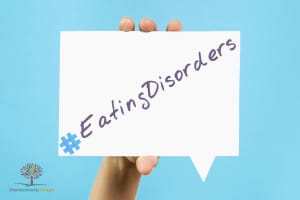
Instagram is increasingly used as a way for young men and women with eating disorders to help and support each other in their recovery journey.
As a strong social medium, Instagram is rapidly increasing. As of March 2014, there were over 200millionactive monthly users. Instagram uses the power of photographs to communicate feelings, ideas, and passion for causes. One hashtag that continues to bring Instagram, and other social media, into the news is #eatingdisorders. Even Instagram is showing concern, and some censorship, on the power of their own social medium. Unfortunately, there is still difficulty in drawing the line between what is supportive to the public, and what is harmful to those in recovery. It’s a blurred line, even for those who post images in hopes of being helpful.
Instagram is increasingly used as a way for young men and women witheating disordersto help and support each other in their recovery journey. This support can be done overtly on Instagram, or anonymously. The intent for many using #eatingdisorders, or similar hashtags, is to spotlight the change and transition they have found in recovery. The dark side? These same hashtags and many more are being used to pull viewers into images that are either frankly unsupportive of recovery or are misunderstood in well-meaning intent.
The Power of the Visual
Instagram’s rise in social power can’t be underestimated. It’s free and it’s fast. But is it also dangerous? For those with eating disorders, negative body image and self-esteem are often barriers to recovery. Food and eating behaviors have been a way to cope with difficult self-perceptions, emotions, trauma, anxiety, and fears.
Treatment Can Be Life Changing. Reach out today.
Whether you are struggling with addiction, mental health or both, our expert team is here to guide you every step of the way. Don’t wait— reach out today to take the first step toward taking control of your life.
Some great Instagram sites that support recovery are out there, including those that are found by searching #eatingdisorders. Many share the process of recovery, such as a personal recovery page that uses photographic collages to celebrate the joy of healthy plates of food. Sounds simple, but this is an area of great struggle for someone withanorexiaorbulimia. As a way to channel painful feelings, or practice self-love, Instagram is a vehicle used by many young teens and adolescents in recovery. But even on the positive side, it is important to remember that even in “before and after” photo diaries that are seen on Instagram, the impact may not be the encouraging one that these selfies were intended to provide.
Instagram has made a conscious effort to ban hashtag searches such as #proanorexia and #thinspiration. These tags trended quickly but were readily recognized as sending a damaging message, instead of a positive one based on health and wellness. Some sites that are still out there even come with disclaimers: “This site may be triggering for those in recovery, or thinking about recovery.” They openly state that they arepro-eating disorder, and are “doing the right thing” by putting up this disclaimer.
Seeingshouldn’talways be about believing, regardless of what the old adage purports.






